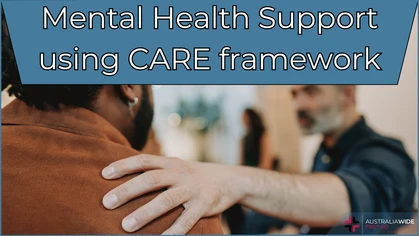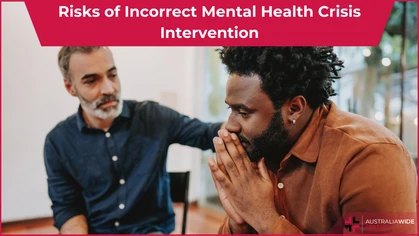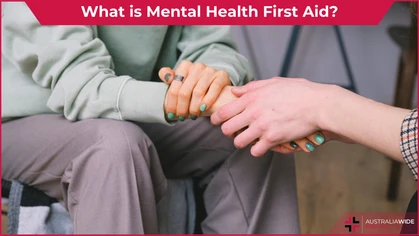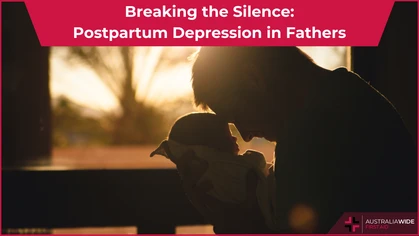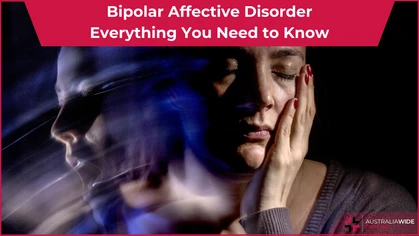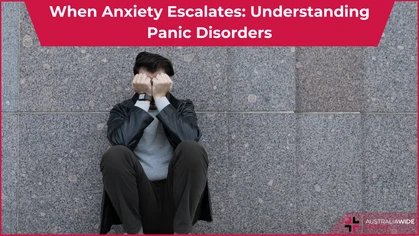Navigating the Emotional Waves of Secondary Trauma

Mental Health
 Whether you've witnessed a shocking car accident, the distressing unfolding of a violent act, the heart-wrenching journey of caring for a sick loved one, or hearing horror stories, the deep impact of experiencing traumatic events is part of the complex fabric of human life.
We often refer to witnessing traumatic events as
Whether you've witnessed a shocking car accident, the distressing unfolding of a violent act, the heart-wrenching journey of caring for a sick loved one, or hearing horror stories, the deep impact of experiencing traumatic events is part of the complex fabric of human life.
We often refer to witnessing traumatic events as The Unpredictable Symphony: Witnessing Trauma
Picture this: a sudden hush falls over a scene—maybe a car crash, a child's painful cry for help after breaking her leg bones, or the silent struggle of someone facing a heart attack or battling cancer. It's the moment when life's unpredictability takes an unexpected turn. You find yourself on the side-lines, silently witnessing another person's misery and experiencing the pain as if it were your own lived experience. When the hard reality sinks in, you are hit by a cyclone of shock, panic, and adrenaline, resulting in a jumbled combination of emotions. Your heart pounds in sync with the unfolding drama, and an overpowering sense of helplessness becomes the main focus. This initial reaction sets the tone for the emotional journey ahead. Unquestionably, witnessing trauma may have tremendous and varied effects on you, affecting every element of your life, from physical and emotional to behavioural ramifications.Physical Symptoms of Witnessing Trauma
When you're thrown into the whirlwind of witnessing trauma, it's like surfing emotional waves that also leave a tattoo on your physical self. It is because there is a real connection between our emotional and physical selves. Common physical effects of secondary trauma include:- Hyperarousal: It is the body's heightened state of alertness and readiness for potential threats. It can manifest as an increased heart rate, rapid breathing, and a tense, hyper-vigilant posture.
- Sleep Disturbances: Uncomfortable pictures and memories sometimes cause difficulty sleeping, resulting in issues such as nightmares, insomnia, and repeated awakenings during the night.
- Psychosomatic Symptoms: Headaches, stomach issues, and tense muscles without obvious medical causes are examples of mind-body symptoms resulting from the emotional discomfort of witnessing a traumatic event.

Insomnia is a common symptom of secondary trauma.
Emotional Symptoms of Witnessing Trauma
Witnessing trauma can also send waves throughout the inner landscape, leaving a permanent imprint. Such experiences have far-reaching emotional consequences.- Flashbacks: These are involuntary, vivid recollections of the traumatic event. Its signs include emotional distress and a sense of reliving the trauma, even in the absence of immediate danger.
- Intense fear and anxiety: Witnessing something terrible happen to someone else can also cause significant feelings of anxiety and discomfort. It can show itself in the form of persistent anxiety, panic attacks, and a strong desire to avoid anything that reminds you of the traumatic incident.
- Emotional numbing: Numbing is a coping mechanism involving the suppression of emotions. Its impact includes difficulty experiencing joy or pleasure, emotional detachment, and a sense of emotional flatness.
- Depression: Depression is the persistent feeling of sadness, despair, and lack of interest in previously enjoyed activities. It can cause problems with everyday functioning, withdrawal from social activities, and a general reduction in overall well-being.
Behavioural Symptoms of Witnessing Trauma:
The impact of witnessing tragedy has not just emotional and physical symptoms, but can also dramatically influence our behaviour. Trauma, whether directly experienced or witnessed, intimately weaves itself into the fabric of how we interact and act in the world. The following are examples of common behavioural symptoms:- Avoidance behaviors: These are deliberate measures used to avoid memories of the traumatic experience. It can include avoiding certain places, people, or activities connected with the trauma.
- Hypervigilance: It's an intensified state of being on high alert (you constantly scan your surroundings for any dangers). The condition may manifest in the form of being easily startled, often looking for escapes, and constantly scrutinizing your surroundings.
- Social withdrawal: This is the tendency to withdraw from social interactions. It can result in strained relationships, a weaker support network, and an increased sense of loneliness.
- Aggressive outbursts: It is a sudden and intense expression of anger or irritability. It can manifest as verbal or physical aggression, often disproportionate to the immediate situation.

Secondary trauma can have long-term impacts on your physical health, like your blood pressure.
Long-Term Impacts
Seeing tragedy may have long-lasting and complex repercussions, seeping into different facets of your life. Here are some common, long-lasting effects that may persist over time:- Post-Traumatic Stress Disorder: PTSD is a grave and long-lasting mental health disease that can arise from going through or seeing trauma. Reliving the trauma, avoiding reminders, negative mood and thought changes, and increased arousal are some of the symptoms that may manifest.
- Chronic Health Conditions: Secondary trauma can increase the likelihood of weight changes, either losing or gaining. They may worsen blood pressure, contribute to cardiac issues, and lead to the use or misuse of drugs. These challenges can also bring about other physical symptoms that can affect your ability to function.
Compassion as a Double-Edged Sword
Witnessing someone in a harrowing situation, like a car accident, truly digs deep into your emotions. Now, shift your focus to a situation in which you need to provide a helping hand to someone who has been through a horrific life experience, especially if that person is close to you. This scenario adds emotional weight to the situation, creating an extra mental health difficulty that tugs at your emotions. Being their primary support is a delicate mix of compassion and duty when urgency and care smoothly combine. It's an emotional journey where the pain of a child hits home, and assisting someone through a heart attack becomes a shared battle. However, there's an enduring aftermath: an understated emotional melody known as compassion fatigue. You will most likely suffer from this condition where you get too involved in supporting people through their struggles. The ghosts of haunting memories linger, carrying an unsaid weight that goes beyond the current situation and exposes a struggle that lies behind your bravery on the outside. Compassion fatigue presents comparable mental health effects to those linked to witnessing someone go through a traumatic event. Recognizing the repercussions of secondary trauma is critical, as is making self-care a high priority. Reaching out for professional help, adopting adaptive coping methods, and building a work-life balance are all critical stages in relieving the effects of trauma and nourishing general well-being.
Experiencing compassion fatigue does not mean you are a bad person, or are less caring. It is a sign to look inwards and fill your own cup.
Soothing the Soul: Managing Secondary Trauma
In the emotional aftermath, seeking support becomes a lifeline. Healing from secondary trauma involves a combination of self-care, seeking professional help, and implementing coping strategies. Acknowledge and validate your feelings, and seek help. Validating your feelings and feelings and accepting them to be genuine reactions to other people's tragedies is a vital first step toward recovering from secondary trauma. Seeking help from a trauma-informed mental health professional, whether through therapy, counselling, or involvement in support groups, may provide a safe and supportive environment. These channels pave the way for emotional processing and provide crucial insights into coping techniques adapted to your unique situation. Establish healthy boundaries and practice self-care. It is critical to care for both your physical and emotional health. Set clear boundaries between work and personal life to take care of yourself. Put limits on how much disturbing stuff you expose yourself to, and prioritize self-care to minimize emotional exhaustion. Spend some time doing things that offer you joy and relaxation, such as exercising, engaging in hobbies, practicing mindfulness, or spending time with loved ones. Develop coping strategies and avoid isolating yourself from others. Find coping strategies that work for you. It can involve journaling, deep breathing techniques, meditation, mindfulness exercises, or creative pursuits. Try out multiple options to see what makes you feel comfortable. Open up and share your experiences with trusted friends, family, or colleagues. Making connections with people who are aware of or have experienced similar struggles can provide support and a feeling of camaraderie. Remember that everyone's route to healing is different, and it's entirely OK to seek support. If your problems persist or worsen, get tailored professional help and guidance from a mental health expert.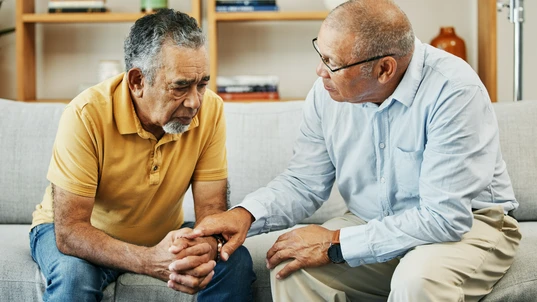
Seeking professional help can get you back on track quicker.
The Bottom Line
When we witness someone else in pain, it affects us as well. It's difficult to bear the weight of their anguish. As we face these emotional obstacles, let us remember how deeply they touch our hearts. Every tear and heartbeat serve as a reminder that we're all in this together. Life is a large, woven image, and pain is a part of it. Caring for others is like using a needle to stitch understanding and kindness. In difficult circumstances, we discover the courage to persevere and emerge stronger and more compassionate. Your emotions are not a sign of weakness; they demonstrate that you care. Find solace in the echoes of shared grief. Don't be afraid to lean on others, because healing often happens when we're open about our struggles.
Originally published at
https://www.australiawidefirstaid.com.au/resources/navigating-the-emotional-waves-of-secondary-trauma
as part of the Australia Wide First Aid Articles Library

